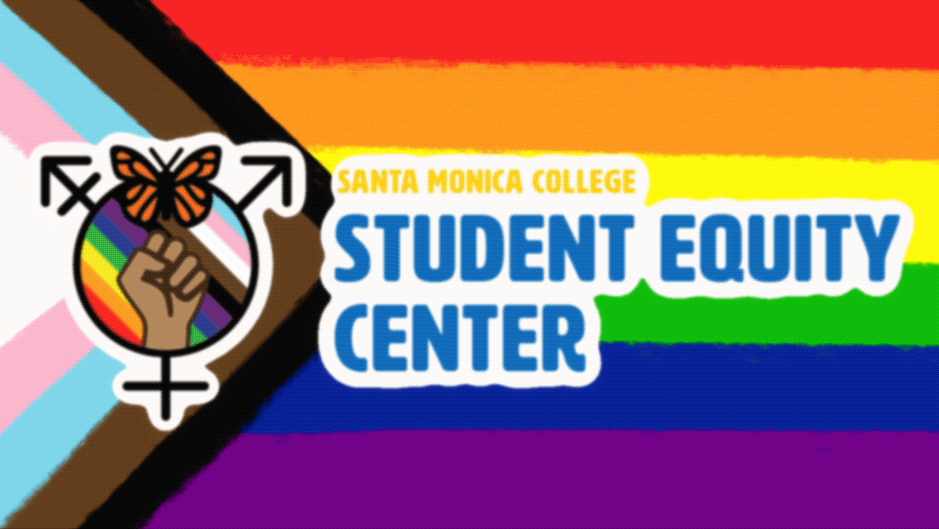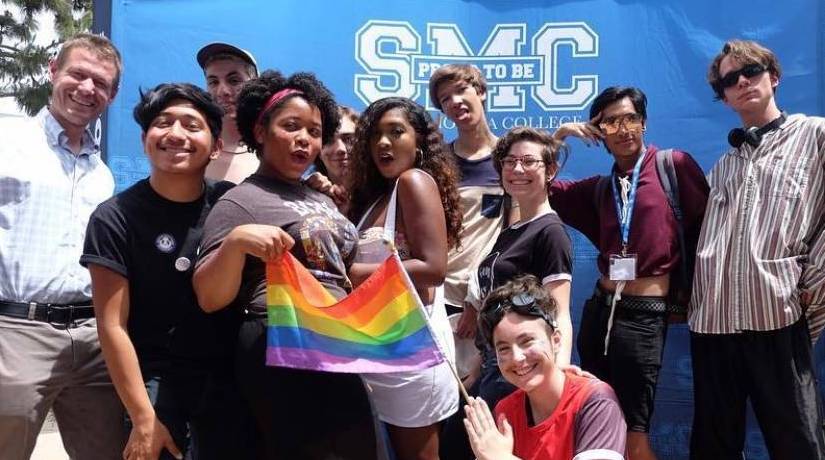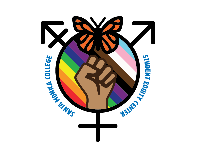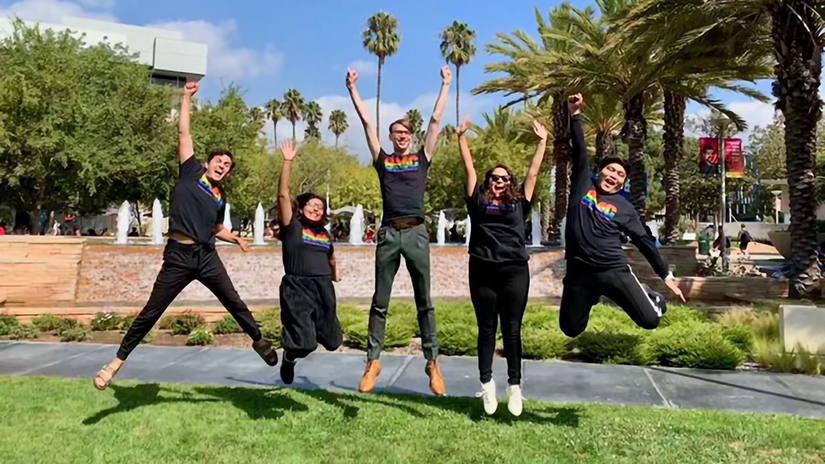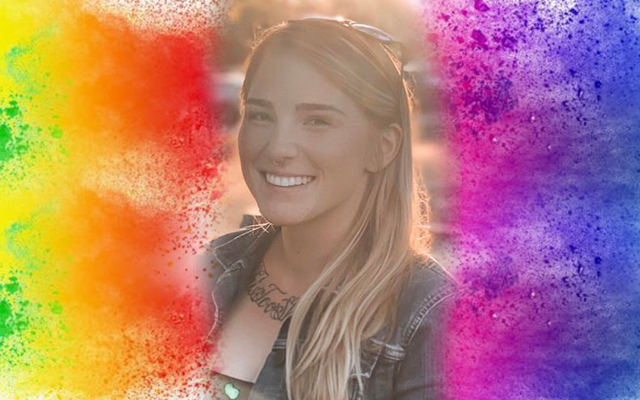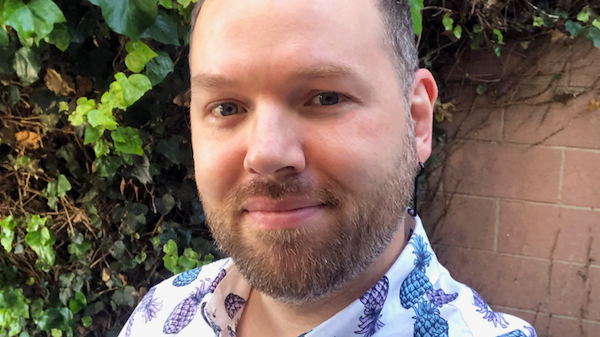Note: This should only be used as a general guide to get a feel for how some folks
may identify and common terms/identities in the LGBTQ+ community. Much of the language
we use to describe our experiences has historical and contemporary political meaning.
Language is constantly changing! The best way to be an ally is to mirror the language
of how someone self-identifies. Glossary of Terms PDF
Ally: A person who does not necessarily identify with a group, but still advocates for
that group's rights. An ally gives support through action! For example, by advocating
for queer folks, education themselves about queer experience and exploring one’s individual
biases, challenging anti-LGBTQ+ discrimination, and much more!
Agender: A person who does not identify themselves as having a particular gender.
Aromantic: In its broadest meaning, this umbrella term encompasses anyone who has a low or absent
romantic attraction to others. Sexual relationships may be desired.
Asexual: In its broadest meaning, this umbrella term encompasses anyone who has a low or absent
sexual attraction or interest in sexual activity. Intimate romantic/affectional relationships
may be desired.
Biphobia: Negative feelings, attitudes, actions, or behaviors towards people who are, or are
perceived to be, bisexual or pansexual. It may also be a fear of one's own bisexual
or pansexual attractions.
Bisexual: A person who has the potential to be sexually and/or romantically attracted to men
and women.
Binding: tight wrapping of the chest using bandages, cloth, elastic or other items of clothing
(such as binders) to minimize the appearance/size of breasts. Binding can be painful.
Butch: gender expression and/or social/relationship roles perceived as masculine. Butch/femme
identities were prominent during the 1950s, working-class bar culture and are still
used today in many queer communities (i.e., lesbian communities, gay male communities,
etc.).
Cisgender: Often abbreviated as "cis", this term means that you are comfortable with the gender
identity assigned to you at birth. This is the opposite of transgender.
Cissexism: Subtle or blatant forms of discrimination directed towards trans people. Often cissexism
manifests as the assumption that all people are, or should be, cisgender. As a system
of power, cissexism bestows advantages to those who are cisgender.
Colorblindness: While often well intentioned, this is a failure to acknowledge race-based differences
and systematic racism which allows oneself to deny the lived experiences of people
of color.
Closeted: A term often used for LGBTQ+ people who have not yet had the privilege to disclose
their orientation or gender identity. This may be for safety, fear of rejection or
other personal reasons.
Coming out: disclosing one’s gender identity and/or sexual orientation. This can refer to sharing
this information with one person, multiple people, or publicly, such as on social
media. Coming out can also refer to self and process of accepting one’s LGBTQ+ identity.
Crossdresser: A cisgender person who dresses in clothing deemed inappropriate by society for the
gender assigned them at birth.
Demisexual: A person who only experiences sexual attraction to people that they have developed
an emotional connection with.
Drag King & Drag Queen: A person who cross-dresses as a means of performance or entertainment.
FTM: An abbreviated term Female-to-Male, this label is often adopted by people of trans
experience who was assigned female at birth but know themselves to be male.
Femme: gender expression and/or social/relationship roles perceived as feminine. Butch/femme
identities were prominent during the 1950s, working-class bar culture and are still
used today in many queer communities (i.e., lesbian communities, gay male communities,
etc.).
Gay: While most often associated with men, in its broadest meaning this is a person who
is sexually and/or romantically attracted to people of the same gender.
Genderqueer: This term represents a blurring of the lines around gender identity and sexual orientation.
Genderqueer individuals typically reject notions of static categories of gender and
embrace a fluidity of gender identity and sexual orientation.
Gender Binary: A dichotomous classification system of gender that positions men/masculine and women/feminine
as opposites.
Gender Dysphoria: The deep discomfort a person who is transgender may experience regarding the extent
to which their physical body aligns with their gendered sense of self.
Gender Euphoria: The immense feeling of joy a person who is transgender may experience when their physical
body aligns with their gendered sense of self.
Gender Expansive:A person whose gender expression and/or identity broadens or overflows our binary
cultural and societal gender expectations. Some people prefer this term to “gender
non-conforming.”
Gender Expression: Manifestation of an individual’s sense of being masculine and/or feminine through
the use of names, clothing, hairstyle, accouterments, and body movements associated
with gendered groups. Gender expression is not necessarily an identity, but rather
is about how gender is embodied and communicated to others.
Gender Fluid: A person who does not identify themselves as having a fixed gender. Gender fluidity
conveys a wider, more flexible range of gender identities and expression, with interests
and behaviors that may even change from day to day. Gender fluid individuals do not
feel confined by restrictive boundaries of stereotypical expectations of girls or
boys.
Gender Identity:The complex relationship between physical traits and one’s internal sense of self
as male, female, both or neither, as well as one’s outward presentations and behaviors
related to that perception. Biological sex and gender are different; gender is not
inherently connected to one’s physical anatomy.
Gender Pronouns: Sometimes referred to as “personal gender pronouns” (PGP), gender pronouns (he/she/they/ze/individual’s
name, etc.) are how we refer to others without using their name. You can’t always
know someone’s gender pronouns by looking at them. Asking and correctly using someone’s
pronouns is one of the most basic ways to show your respect for their gender identity.
Gender pronouns are not “preferred;” they just are.
Heteronormativity:The systems of advantages bestowed on people who are heterosexual. It can also be
the assumption that all people are, or should be, heterosexual and gender-conforming.
Homophobia: Negative feelings, attitudes, actions, or behaviors against LGBTQ+ people or people
perceived to be LGBTQ+. It may also be a fear of one's own same-sex attractions.
Homosexual: An outdated clinical term used to describe someone who is gay or lesbian. Historically,
the term was a stigmatizing classifier used by the mental health practitioners. Many
prefer the terms: gay or lesbian, although some still use it as a form of identification.
Intersectionality: Originally coined by Professor Kimberlé Crenshaw in the 1980’s, intersectionality
describes how different systems of oppression overlap in the lives of people with
marginalized identities. Crenshaw sought to better understand how gender, race and
class combined to affect women’s lives. Intersectionality describes how the oppression
faced by white, middle-class women is different than that experienced by women of
color, women with disabilities, poor women, etc. Intersectionality shows that different
forms of discrimination (classism, racism, sexism, ageism, ableism, transphobia, etc.)
are interconnected, and this interconnection should always be considered in the pursuit of promoting
social/political equity.
Intersex: an umbrella term used to describe a wide range of natural bodily variations that
do not fit precisely into binary notions of male or female bodies. In some cases,
intersex traits are apparent at birth, in others, they are not visible until puberty
or not apparent at all. In the past, the inaccurate and offensive term ‘hermaphrodite’
was used to describe intersex people, but it should be avoided as it is derogatory. Many intersex individuals experience mutilation during infancy
and early childhood in order to make their sex characteristics conform to binary definitions
of what ‘normal’ bodies should look like.
Latinx: This adjective relates to those of Latin American origin or descent and is the non-gendered
alternative to "Latino" and "Latina". Some people view this as a term of empowerment
and others strongly dislike this term. Other gender-inclusive language used is Latin@.
Lesbian: A woman who is sexually and/or romantically attracted to other women. LGBTQ+: Lesbian,
Gay, Bisexual, Transgender, Queer, plus so much more!
MTF: An abbreviated term Male-To-Female, this label is often adopted by people of trans
experience who was assigned male at birth but know themselves to be female.
Non-Binary: A person whose gender identity is not as a man or a woman. They may be both, neither,
somewhere between, a different gender or no gender at all.
Omnigender: A person who does not identify themselves as having a particular gender or regards
themselves as all genders.
Outing: exposing someone’s gender identity or sexual orientation without their permission
or consent. Outing often has serious, life-changing consequences that can affect an
individual’s privacy, personal safety, familial/religious situations, financial stability,
etc. – don’t do it!
Pansexual: A person who is sexually and/or romantically attracted to people regardless of their
gender identity, gender expression or biological sex. This term goes beyond a gender
binary.
Polyamory: The practice of or desire for intimate relationships with more than one partner at
a time. These relationships depend upon consent and knowledge of all involved.
Queer: A simple label to explain orientations, gender identities and/or gender expressions
that do not conform to societal expectations. Some people view this as a term of empowerment
and others strongly dislike this term.
Questioning: A person who is unsure about their orientation and/or gender identity.
Romantic Orientation:The part of our identity related to whom we are romantically attracted; also known
as affectional orientation.
QTPOC/QTWOC:This abbreviation stands for Queer & Trans People of Color or Queer & Trans Women
of Color and is rooted in the concept of intersectionality - which focuses on the
intersections and interactions between various forms and systems of oppression including
racism, gender, classism, religious-based oppression, and more.
Sexual Orientation: Patterns of sexual and romantic attraction toward men, women, neither, both, or all
of the above!
Sexual Identity:labels used to self-identify our patterns of sexual and/or romantic attraction. Common
sexual identities include gay, lesbian, bisexual, queer, pansexual, omnisexual, asexual,
demisexual and heterosexual.
T: short for testosterone
Trans: short for transgender
Transition: The process by which a transgender individual lives consistently with his or her gender
identity, and which may (but does not necessarily) include changing the person’s body
through hormones and/or surgical procedures. Transition can occur in any combination
of ways: social transition through changes in clothing, hairstyle, name and/or pronouns;
medical transition through the use of medicines such as hormone “blockers” or hormones,
gender-affirming surgeries or other medical procedures; and/or legal transition, which
involves changing documents such as identification cards, drivers license, birth certificates,
etc. Surgery is not required in order to transition. The steps of transition vary
from person to person. Not all gender-expansive people desire or pursue forms of medical
transition.
Transgender: In its broadest meaning, this umbrella term encompasses anyone whose gender identity
does not correspond to the gender they were assigned at birth.
Transfeminine: Transfeminine is a term used to describe transgender people who were assigned male
at birth, but identify with femininity to a greater extent than with masculinity.
Transmasculine: Transmasculine is a term used to describe transgender people who were assigned female
at birth, but identify with masculinity to a greater extent than with femininity.
Transphobia: Negative feelings, attitudes, actions, or behaviors against transgender people or
people perceived to be transgender. It may also be a fear of one's own gender non-conformity.
Transsexual: A person whose gender identity is not congruent with the gender they were assigned
at birth. Medical and surgical interventions that bring congruency are typically desired.
This is a dated term. Many prefer the terms: transgender or trans.
Two-Spirit:A Native American term for LGBTQ+ individuals with dual or multiple genders. It can
mean having both a masculine and a feminine spirit. It has different meanings in different
communities. Some Native individuals embrace this term while others strongly dislike
it.
Xenophobia: The dislike or prejudice of people from other countries or who are different. This
can add an additional layer of discrimination to folks who are LGBTQ+
